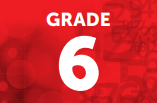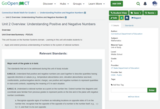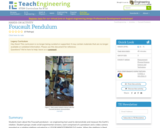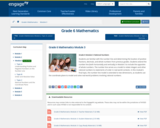
CSDE Model Curricula Quick Start GuideEquitable and Inclusive Curriculum The CSDE believes in providing a set of conditions where learners are repositioned at the center of curricula planning and design. Curricula, from a culturally responsive perspective, require intentional planning for diversity, equity, and inclusion in the development of units and implementation of lessons. It is critical to develop a learning environment that is relevant to and reflective of students’ social, cultural, and linguistic experiences to effectively connect their culturally and community-based knowledge to the class. Begin by connecting what is known about students’ cognitive and interdisciplinary diversity to the learning of the unit. Opposed to starting instructional planning with gaps in students’ knowledge, plan from an asset-based perspective by starting from students’ strengths. In doing so, curricula’s implementation will be grounded in instruction that engages, motivates, and supports the intellectual capacity of all students. Course Description: In Grade 6, instructional time should focus on four critical areas: (1) connecting ratio and rate to whole number multiplication and division and using concepts of ratio and rate to solve problems; (2) completing understanding of division of fractions and extending the notion of number to the system of rational numbers, which includes negative numbers; (3) writing, interpreting, and using expressions and equations; and (4) developing understanding of statistical thinking. Upon completion of this course students will have the ability to:Understand ratio concepts and use ratio reasoning to solve problems. Apply and extend previous understandings of multiplication and division to divide fractions by fractions. Multiply and divide multi-digit numbers and find common factors and multiples. Apply and extend previous understandings of numbers to the system of rational numbers. Apply and extend previous understandings of arithmetic to algebraic expressions. Reason about and solve one-variable equations and inequalities. Represent and analyze quantitative relationships between dependent and independent variables. Solve real-world and mathematical problems involving area, surface area, and volume. Develop understanding of statistical variability. Summarize and describe distributions.Aligned Core Resources: It is critical that curriculum be implemented using high quality instructional materials to ensure all students meet Connecticut’s standards. Ensuring alignment of resources to the standards is critical for success. There are tools that are available to districts to assist in evaluating alignment of resources, such as CCSSO’s Mathematics Curriculum Analysis Project and Student Achievement Partner’s Instructional Materials Evaluation Tool. In addition, there exist compilations of completed reviews from a variety of resources. Some of these include but are not limited to EdReports, Louisiana Believes, CURATE, and Oregon Adopted Instructional Materials. Aligned Core Programs: The CSDE in partnership with SERC has engaged with providers of high-quality vetted resources to provide additional alignment guidance to the CSDE model curriculum. High-quality instructional resources are critical for improving student outcomes. The alignment guidance is intended to clarify content and support understanding for clear implementation and coherence. Materials selection is a local control decision and these documents have been provided from participating publishers to assist districts in implementation. Use of the materials from these publishers is not required. These aligned core programs meet expectations as reported by EdReports. If your resource is not listed below, you are encouraged to review EdReports to ensure the alignment of your resource to the Connecticut Core Standards. Strong alignment of curricula and instructional materials have the potential to support student engagement of meaningful grade level content daily and teacher growth. Carnegie Learning Math Grade 6EdGems Math Grade 6enVisions Grade 6Eureka Math Grade 6Fishtank Plus Math Grade 6HMH Into Math Grade 6Imagine Learning Illustrative Mathematics Grade 6i-Ready Math Grade 6MidSchoolMath Grade 6Open Up Resouces Math Grade 6Reveal Math Grade 6Additional Course Information: Major work of Grade 6 mathematics focuses on ratios and proportional relationships and early expressions and equations. Fluencies required upon completion of grade 6 include multi-digit division and multi-digit decimal operations. Habits of Mind/SEIH/Transferable Skills Addressed in the Course: The Standards for Mathematical Practice describe the thinking processes, habits of mind, and dispositions that students need to develop a deep, flexible, and enduring understanding of mathematics. They describe student behaviors, ensure an understanding of math, and focus on developing reasoning and building mathematical communication. Therefore, the following should be addressed throughout the course: Make sense of problems & persevere in solving them Reason abstractly & quantitatively Construct viable arguments & critique the reasoning of others Model with mathematics Use appropriate tools strategically Attend to precision Look for & make use of structure Look for & express regularity in repeated reasoning
- Subject:
- Mathematics
- Material Type:
- Full Course
- Provider:
- CT State Department of Education
- Provider Set:
- CSDE - Public
- Date Added:
- 09/21/2021


